Activity
Different Types of Rocks
This activity makes the rock cycle real for your child. Processes that take millions of years can be recreated at far lower temperatures in your kitchen. You and your child can also finally make use of all those broken crayons you have in the closet. Just be prepared for some messy learning!
Grades:
Subjects:
Thank you for your input.
What You Need:
- At least 5 full sized different colored crayons
- Grater
- Bowl
- Measuring spoons
- Foil
- Iron, ideally that you don’t use much anymore
- Two thin cloths that you don’t care about
- Metal spoon you don’t care about
- Small (approximately 3 x 3) metal tin you don’t care about
- Hot mitt
- Stove
What You Do:
- Cover your work area with newspaper.
- Remove the paper from the crayons. If you don’t have five whole crayons, just pick up enough pieces of different colors to total about five crayons.
- Grate the crayons into the bowl, using one of the smaller sets of holes. Because the grater is sharp and the crayons are hard, an adult should take the lead. Tell your child that this process is like the process of weathering which, over millions of years, wears rock down to gravel, sand and mud. You need about 10 teaspoons of grated crayons to make all the rocks and have some left over to compare with your crayon rocks.
- Help your child cut three 4 x 6 inch pieces of foil.
- Tell your child that you first will make sedimentary rock, which is made when sediments, like sand, are buried and pressed by tons of overlying layers.
- Ask your child to measure 3 tsp of the grated crayons into the center of one of the pieces of foil. The pile of grated crayons should be about 1.5 x 1.5 inches.
- Help your child fold over both edges of the foil to cover the pile of grated crayons.
- Next, on a hard smooth surface, not carpeted, ask your child to stomp on the foil wrapped crayons. Have your child move around to make sure all the parts are crushed together.
- Help your child unwrap the crushed crayon. The particles should be partially fused together, but crumbly, and the different colors of crayons will still be visible.
- Tell your child the next type you will be making is metamorphic rock, which forms when rock layers are buried so deeply that the Earth’s heat and pressure changes them.
- Ask your child to measure 3 tsp of the grated crayons to put in the center of one of the pieces of foil. The pile of grated crayons should be about 1.5 x 1.5 inches.
- Help your child fold over both edges of the foil to cover the pile of grated crayons.
- Ask your child to wrap the crayons with another piece of foil.
- Heat up the iron to low heat. Cover the ironing board with one piece of cloth, cover the crayon covered foil with another piece of cloth. The crayon wax can melt quickly, and you don’t want it getting into your iron or ironing board.
- Press the warm iron upon the cloth covered foil until the foil feels warm. An adult should take the lead here.
- Let cool for a few minutes.
- Help your child carefully open the foil. The crayon pieces should be more fused than with the sedimentary rock. Some parts might have melted, but individual crayon colors should still be visible.
- The third type of rock your child will make is an igneous rock. Igneous rocks form when the rock melts completely.
- Help your child construct a mold for their igneous rock by folding a piece of foil into a 3 x 3 inch tray. The sides should be about an inch high, creating a 1 inch space on the bottom. Place mold on dish in case it leaks.
- Have your child measure three teaspoons of the grated rock into the pie tin.
- Heat the tin over the stove at low heat, stirring constantly.
- Remove after the crayon melts completely, which won’t take long.
- Pour the liquid into the mold. Explain to your child that the liquid represents lava, or liquid rock at the earth’s surface. It would be called magma if it melted below the earth’s surface.
- Let cool for several minutes.
- Help your child remove their igneous rock from the mold.
Once your child has made all of their rocks, have them arrange them in a circle. Challenge your child to describe how the sedimentary rock could be changed into metamorphic (more heat), and how the material in an igneous rock could become part of a sedimentary rock (weathering, burial and pressure). This activity will help your child appreciate how rocks change, given enough time.
Related learning resources

The Three Types Of Rocks!
Lesson plan
The Three Types Of Rocks!
Teach your students about different types of rocks and how they're formed, using objects that your class is familiar with.
5th Grade
Science
Lesson plan
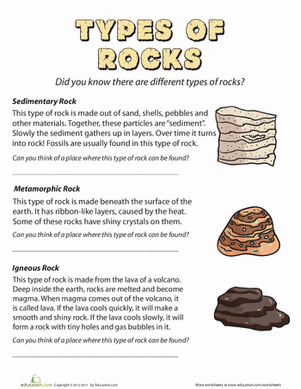
Types of Rocks
Worksheet
Types of Rocks
Got a kid who loves rocks? Encourage your little geologist to learn about the 3 major rock types with this worksheet.
2nd Grade
Science
Worksheet
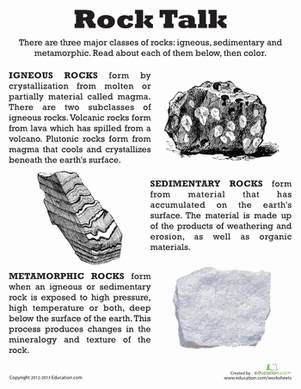
Classifying Rocks
Worksheet
Classifying Rocks
Here's an introduction to different types of rocks.
3rd Grade
Science
Worksheet
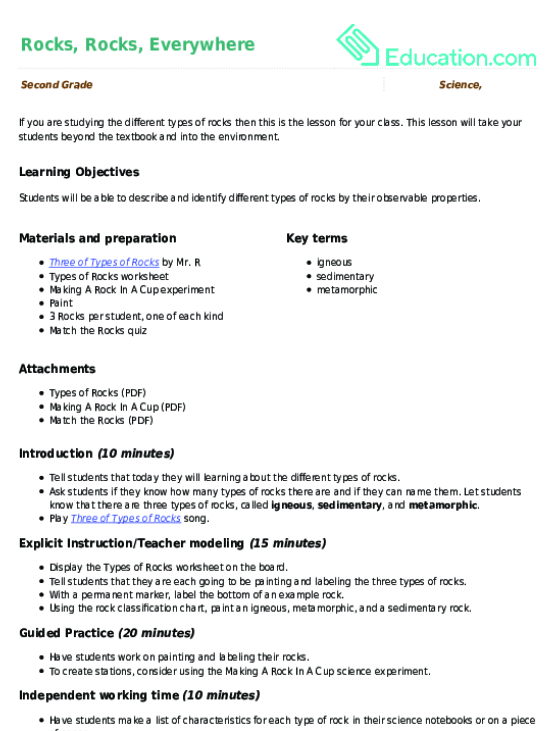
Rocks, Rocks, Everywhere
Lesson plan
Rocks, Rocks, Everywhere
If you are studying the different types of rocks then this is the lesson for your class. This lesson will take your students beyond the textbook and into the environment.
2nd Grade
Science
Lesson plan
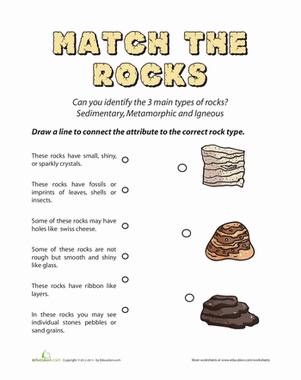
Types of Rocks: Quiz
Worksheet
Types of Rocks: Quiz
Can your little geologist identify the three main types of rock? Test his earth science savvy with a matching activity.
2nd Grade
Science
Worksheet
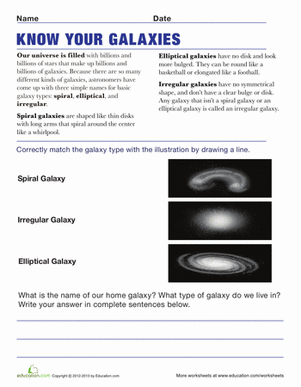
Different Types of Galaxies
Worksheet
Different Types of Galaxies
Take to the starry skies with this worksheet that explores the three basic types of galaxies.
3rd Grade
Science
Worksheet
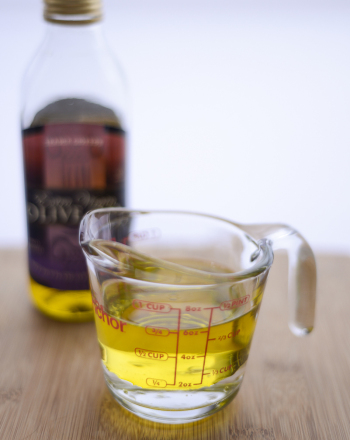
Do Different Types of Oil Mix or “Stack”?
Activity
Do Different Types of Oil Mix or “Stack”?
Do different types of oil mix or stack? Find out in this science fair project idea!
3rd Grade
Activity
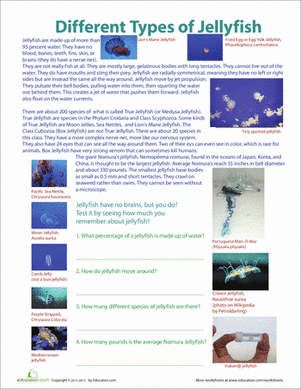
Different Types of Jellyfish
Worksheet
Different Types of Jellyfish
Learn all about the different jellyfish and then test your knowledge with the questions at the bottom of the page.
5th Grade
Science
Worksheet
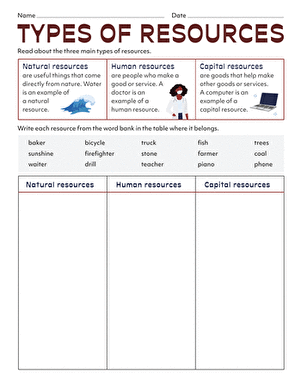
Types of Resources
Worksheet
Types of Resources
Introduce students to the different types of resources in the economy with this helpful worksheet!
2nd Grade
Social studies
Worksheet
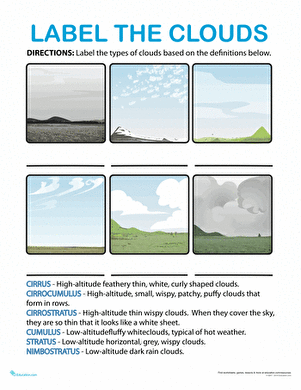
Types of Clouds
Worksheet
Types of Clouds
Here's a beautiful science page to help your child learn the different types of clouds.
2nd Grade
Science
Worksheet
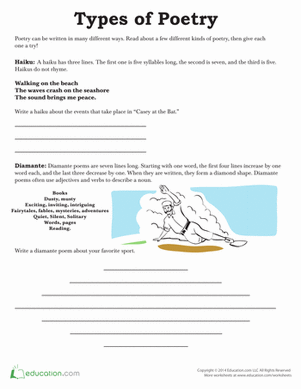
Types of Poetry
Worksheet
Types of Poetry
Get familiar with some types of poetry in this worksheet that covers different poetry structures.
3rd Grade
Worksheet
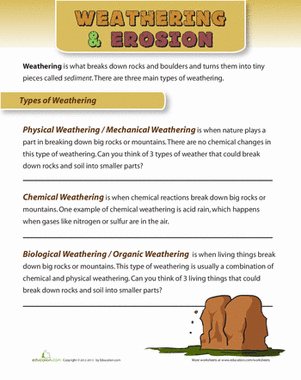
Types of Weathering
Worksheet
Types of Weathering
Help your second grader understand the different types of weathering and how they can affect the earth.
2nd Grade
Science
Worksheet
See this activity in a set:
Exploring Earth: 10 Hands-On Activities



